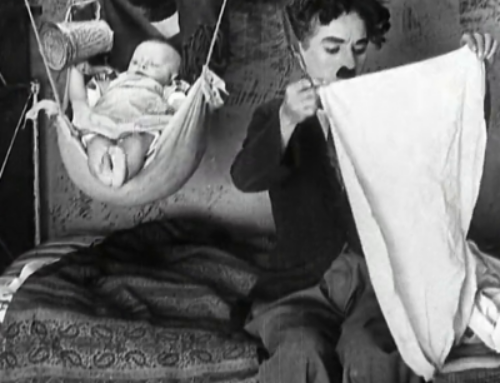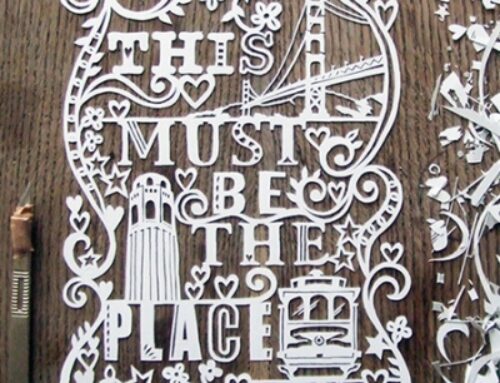Death, which is no longer an organic part of our life, which we remove from our homes and our cities, relegating it to the odorless images of other cities and other homes that television transmits to us. Death, which makes us panicky children without any support when it comes close to people and places we know. Death that we don’t know how to treat, as if it imposed special acts, declarations, heroism. Terrorism relies on this fear of death that has gripped the West for a few decades. Death today is now a taboo in our contemporary culture, while instead it is a normal component of the culture and behavior of traditional societies. Including ours. In fact, it is not only Islamic “crazy” people who are familiar with death, but our non-urban communities also keep it in mind in their daily lives and are not terrified by it.
There is a lighthouse that has helped me since I was a boy in making judgements. It’s the grandmother’s motto: The makings of people can be seen when they have a tarantula in their underwear. He almost always guided me in front of important people who I sensed were miserable but who confirmed their own insignificance only at the first serious misadventure that affected them closely. The opposite is true in earthquake-stricken places: people, who you sense are strong and upright if you go to their area in normal conditions, when they are hit by terrible blows, show themselves capable of withstanding the upheaval in such an essential and structured way that it becomes a model of behaviour. civil, an example even for quieter times.
The emotion of these days has been profound and repeated for me, but not so much for the deaths and destruction. In fact, as I get older I cannot resist a weakness (or strength) that has happened to me without seeking it, and I have ended up not being ashamed of it: misfortunes and cruelties close me in a dark rage, while I dissolve into tears only in the face of qualities finally recognized, to the pride of the projects carried out, to the dignity of resistance to evil. Here: I cried not so much at the sight of the rows of coffins but of the anthill that moves the beams and embraces the wounded man pulled out, of the mayor who says “we will stay here”, of the town that raises its voice only once, not because of what he needs, but to reclaim the rite of death where death has ravaged.
Here, among the piles of rubble, I saw a primary sense of civilization of the territory and of the community shine which I believe is the only true instrument of salvation from the socio-cultural swamp into which we have found ourselves.
And the more we seem to find a righteous way to behave in the face of the death of a community, the more snarling the resentment becomes against the misdeeds of the technicians, against the shortcomings of the administrators.
On the other hand, we must resist the infantile temptation to make scapegoats: bad men are not the primary cause of pain and losses… but in any case they seem unforgivable to us not only the profiteer but also the sloppy, the inattentive in the face of a community that awakens capable of tackling the most gigantic problems in a simple way.
Here, they tell us without proclamations, new pseudo-cities are not being created, but we know how to ask for, and receive, homes for the homeless from those who use it for holidays (as the mayor of Amatrice is doing); here we don’t invent a bureaucracy of self-certifications in which we declare that everything is fine, but we ensure that the consolidation takes place for entire islands of the historic center and not for individual accommodations (as they have done for 25 years in Norcia, which on 25 August survived almost intact and without deaths).
Even if we assume for a moment that there are no vultures cackling at the news of the earthquake, perhaps aid, protection regulations and technicians should also be looked at as possible carriers of damage from neglect and indifference. The techniques of the plain cannot be applied to the houses of the moving mountains: everyone must know that it is now clear that putting concrete roofs on stone houses, to facilitate thermal insulation, is preparing for murder. It is now clear that not imposing collective attention on groups of buildings that are all attacked, to facilitate individual properties, is preparing a massacre. And so on, for dozens of other obvious things that have always been contradicted by the easy remedies of technicians and decision makers.
So now we see humble but grandiose stories and arrogant but unsuccessful strategies, strength and poverty of resources, solidarity and solitude, generosity and irremediable pain coexist in these places.
I find a common thread that starts from afar and unites these ways of being and feeling and which perhaps explains an important part of what we are seeing happen.
The Apennines are the back of the peninsula, on which the pressure of an entire tectonic plate is released: a much older region of plains and coasts now developed, which has always withstood the shocks and blows of the deep part of the Earth. The men most capable of centuries-old projects have always lurked on the faults and under volcanoes, making resilience their way of being. The Sabines, the Samnites, the Umbrians, the Picenes, the Lucanians and the Ligurians resisted the newly arrived Romans as one resists earthquakes: remaining there, with their countryside, their small cities, their peasant culture. They are still them today: those who want to bury their dead in their cemeteries, who cultivate the intact countryside on the edge of the destroyed villages, who have a capacity for sobriety and age-old dignity that makes them resilient to change. And yes, because in an era that has made flexibility its credo, the winning weapon in a rapidly changing world, resilience is not fashionable, it is an obstacle to the free circulation of the latest stupidity.
Its importance is rediscovered only when the blows arrive, when nature or war devastate.
Being constant in the reference values for the quality of life, tenacious, slow in changes, generates the endogenous ability to rearrange a tattered settlement system, if they let you do it in continuity with what was there. And it’s not so much about things and houses, but about the relationships between people, the businesses and services that make up the community. Rebuilding the habitat for the community is the imperative that can be seen on the faces of the survivors. But it is not a cry for help, it is a decisive, serene determination, felt as a duty towards those who have died.
In these terms (and only in this way) the Apennines reveal themselves to be the most suitable habitat for true solidarity, the kind that helps the inhabitants to continue to live. It is this joint exercise of self-determination and compassion that finds its place on the earthquake-stricken mountain, but which could remove a good part of the rubbish that thickens in the gears of our “normal” cities and restart a machine that exists but is jammed. . As long as you don’t ask for the remission of your values, as long as you help the inhabitants get back on their feet, with the tobacconist, the school with its children and the ancient fountain that brings new water.
So, just like that, I would like to be Apennine.




